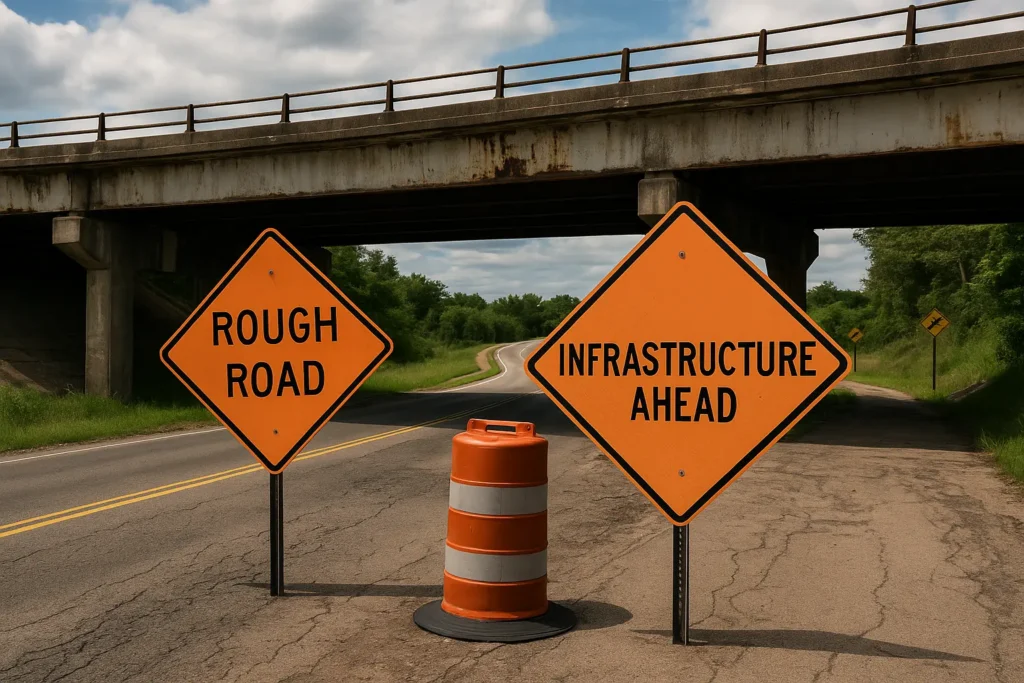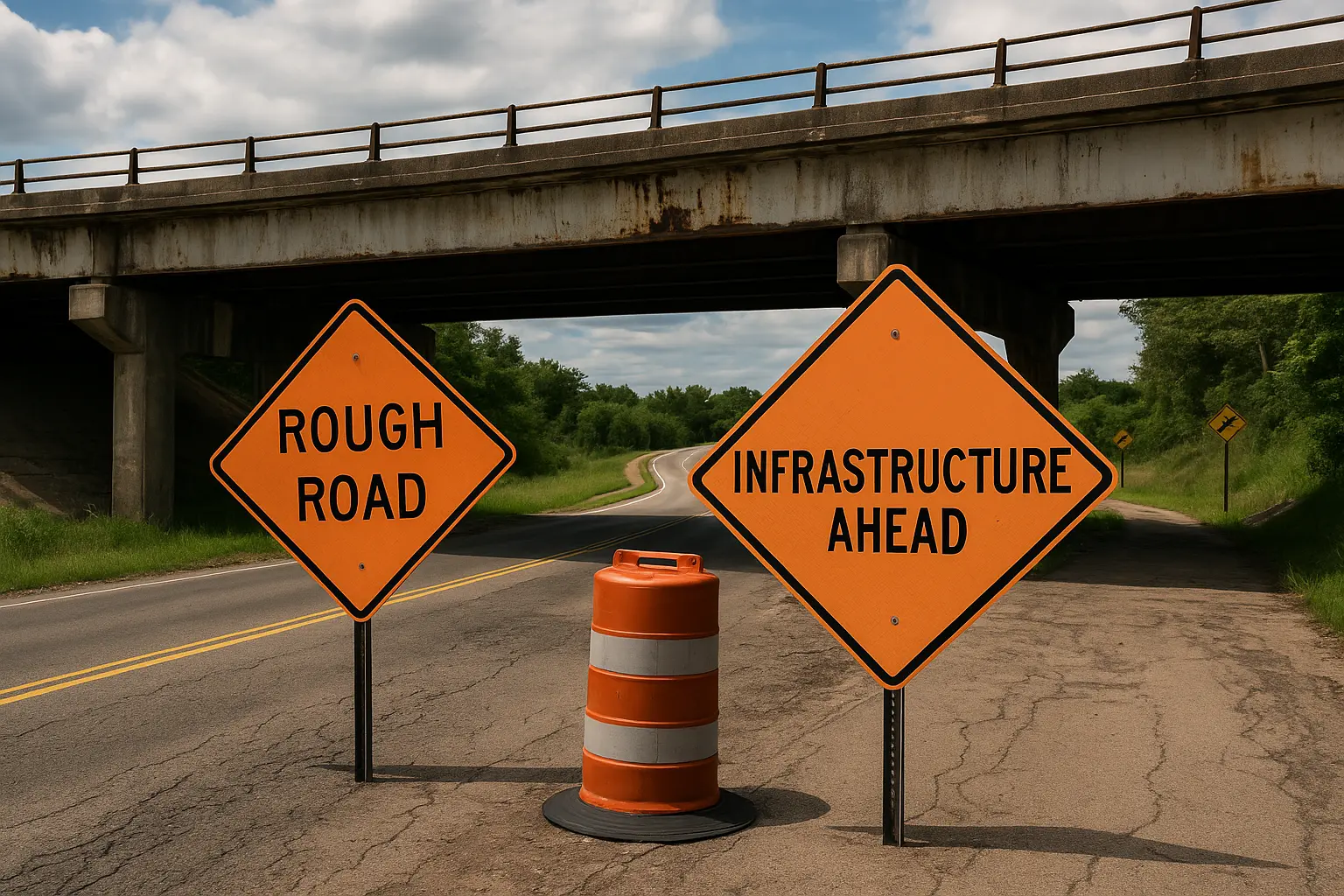Discover which 10 U.S. states have the worst infrastructure in 2025 and why it matters. Learn how roads, bridges, and public services are crumbling — and what this means for residents and the economy.
Introduction: A Nation Built on Shaky Ground
When Americans think of infrastructure, they picture highways, bridges, water systems, and public transportation — the veins and arteries of our country’s economy. But in 2025, a growing number of states are seeing their infrastructure deteriorate beyond acceptable limits. From unsafe roads to failing electrical grids, these issues aren’t just inconveniences — they’re public safety concerns, economic roadblocks, and in some cases, political time bombs.
In this blog, we break down the 10 U.S. states with the worst infrastructure in 2025 based on data from the American Society of Civil Engineers (ASCE), federal investment reports, and recent state-level audits. Let’s take a hard look at where the system is breaking — and what it means for the people living there.
1. Mississippi — Failing Water Systems & Crumbling Roads
Mississippi tops the list again in 2025. The Jackson water crisis may have faded from headlines, but similar issues are still rampant across the state. The rural South is burdened by poor sewage systems, structurally deficient bridges, and highways that haven’t been repaved in decades.
- ASCE Grade: D
- Key Issues: Water quality, road maintenance, bridge safety
“Some counties in Mississippi still use infrastructure built during the Great Depression.” — Civil Engineer, Jackson
2. West Virginia — Aging Infrastructure Meets Budget Cuts
Coal country is facing more than just an energy crisis. Roads are barely passable in many rural counties, and some bridges are deemed “structurally unsafe” but are still in use. Years of underinvestment and population decline haven’t helped either.
- ASCE Grade: D+
- Key Issues: Unsafe bridges, outdated public transit, power outages
3. Louisiana — Hurricanes Expose the Cracks
After Hurricane Ida and other storms in recent years, Louisiana’s weaknesses have become even more exposed. From levees to roads and even power systems, the state struggles to bounce back after every major weather event.
- ASCE Grade: D
- Key Issues: Levee damage, drainage issues, frequent flooding, road erosion
4. Alaska — Frozen Assets No More
Alaska’s harsh climate makes maintenance incredibly expensive, and the remoteness of some towns only adds to the cost and delay. Airstrips and roads are often the only lifeline — and many are falling apart.
- ASCE Grade: C-
- Key Issues: Transportation accessibility, failing runways, seasonal road damage
5. Hawaii — Paradise Lost (to Congestion and Erosion)
Even paradise has its problems. Years of deferred maintenance and over-reliance on federal aid have left Hawaii with some of the worst-performing ports and highways in the country. Rising sea levels and flooding also wreak havoc on infrastructure.
- ASCE Grade: D
- Key Issues: Coastal erosion, road congestion, outdated airports
6. New Jersey — Gridlock, Decay, and Delays
New Jersey residents are no strangers to pothole-laden roads and overcrowded trains. Despite its proximity to major hubs like NYC and Philly, its infrastructure has long been neglected.
- ASCE Grade: D+
- Key Issues: Congestion, failing public transit, aging tunnels

7. Michigan — Still Struggling Post-Flint
The Flint water crisis put Michigan in the spotlight, but problems run much deeper. Outdated lead pipes, old school buildings, and bad roads plague cities like Detroit, Lansing, and Grand Rapids.
- ASCE Grade: C-
- Key Issues: Lead contamination, poor water systems, failing roads
8. Rhode Island — Small State, Big Problems
The smallest state in the U.S. often ranks among the worst for bridge safety. Nearly 22% of its bridges are classified as “structurally deficient,” and the state’s road system gets worse every winter.
- ASCE Grade: D
- Key Issues: Bridge integrity, snow damage, poor drainage
9. Illinois — Big City, Bigger Problems
Chicago alone is dealing with aging public transit systems, crumbling overpasses, and outdated electrical grids. Downstate? Even worse. Many rural towns are neglected entirely when it comes to upgrades.
- ASCE Grade: D+
- Key Issues: Rail infrastructure, outdated electrical grid, congested roadways
10. California — Tech Giant with a Cracked Foundation
Surprised? You shouldn’t be. California’s massive population and size put an extreme burden on infrastructure. Wildfires, droughts, and earthquakes worsen the issue. Despite high taxes, public transit and water systems in cities like San Francisco and Los Angeles are struggling.
- ASCE Grade: C-
- Key Issues: Water shortages, seismic upgrades, outdated transit systems
The Economic and Social Impact of Failing Infrastructure
Failing infrastructure doesn’t just slow down your commute or make your water taste bad — it hits the economy hard. In 2025, economists estimate the U.S. loses $130 billion annually due to infrastructure-related delays, damages, and inefficiencies.
Impacts include:
- Reduced business productivity
- Higher insurance premiums
- Job loss in construction and transportation sectors
- Unsafe living conditions for millions
What’s Being Done?
President Biden’s $1.2 trillion Infrastructure Investment and Jobs Act continues to trickle down into state budgets, but delays in allocation and implementation are common. Critics say the funding process is slow, overly bureaucratic, and often favors politically strategic areas rather than those in greatest need.
How Can Americans Push for Change?
- Vote Smart — Infrastructure investment is often on local ballots.
- Stay Informed — Join town halls and advocate for better funding.
- Hold Politicians Accountable — Demand transparency on how federal infrastructure dollars are spent.
Final Thoughts: Time for a National Wake-Up Call
America’s infrastructure is the literal foundation of its economy and quality of life. While some states are beginning to modernize, others are falling dangerously behind. Whether it’s driving on potholed highways or worrying about clean water, millions of Americans are living with the daily risks of neglected systems.
As we move further into the 2020s, the question isn’t whether we can afford to fix these problems — it’s whether we can afford not to.

Must Read
Judge Tosses Trump’s Copyright Lawsuit Against Bob Woodward Over “Trump Tapes” Audiobook
